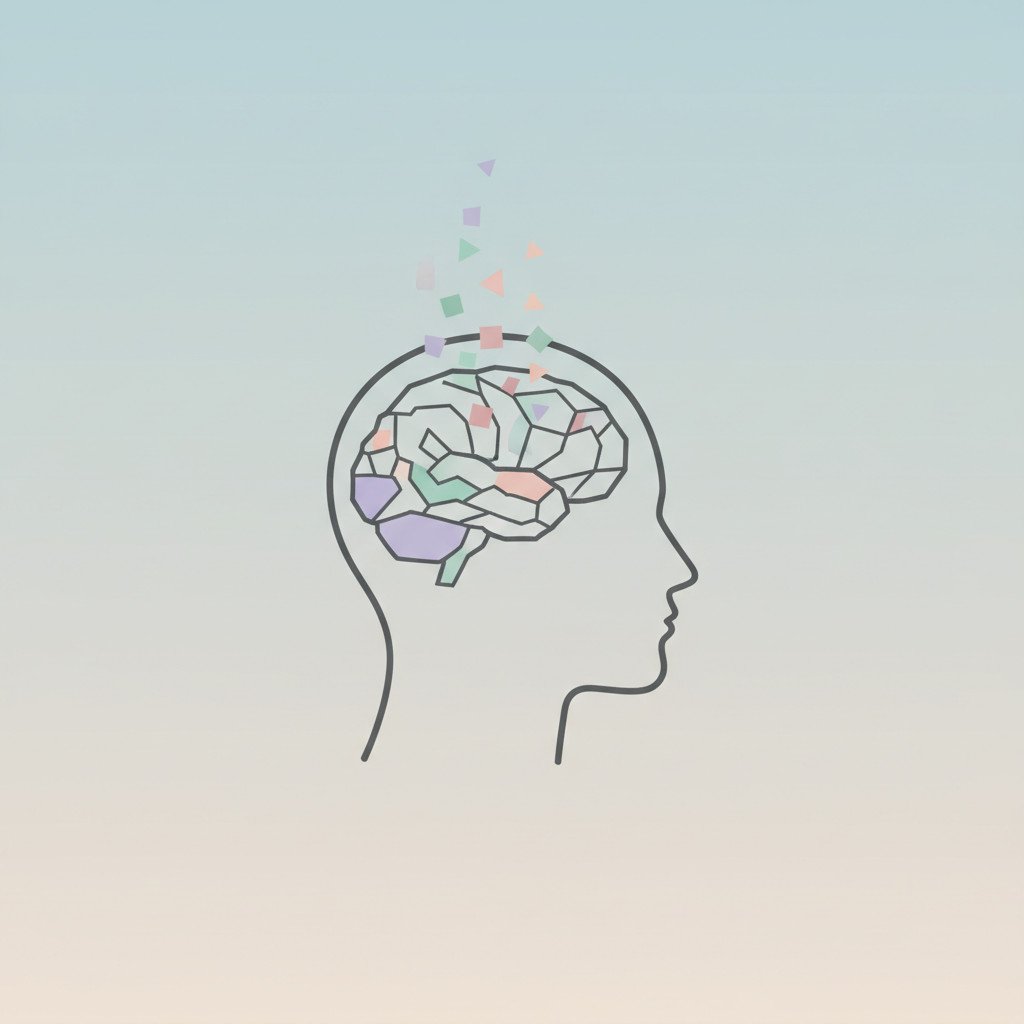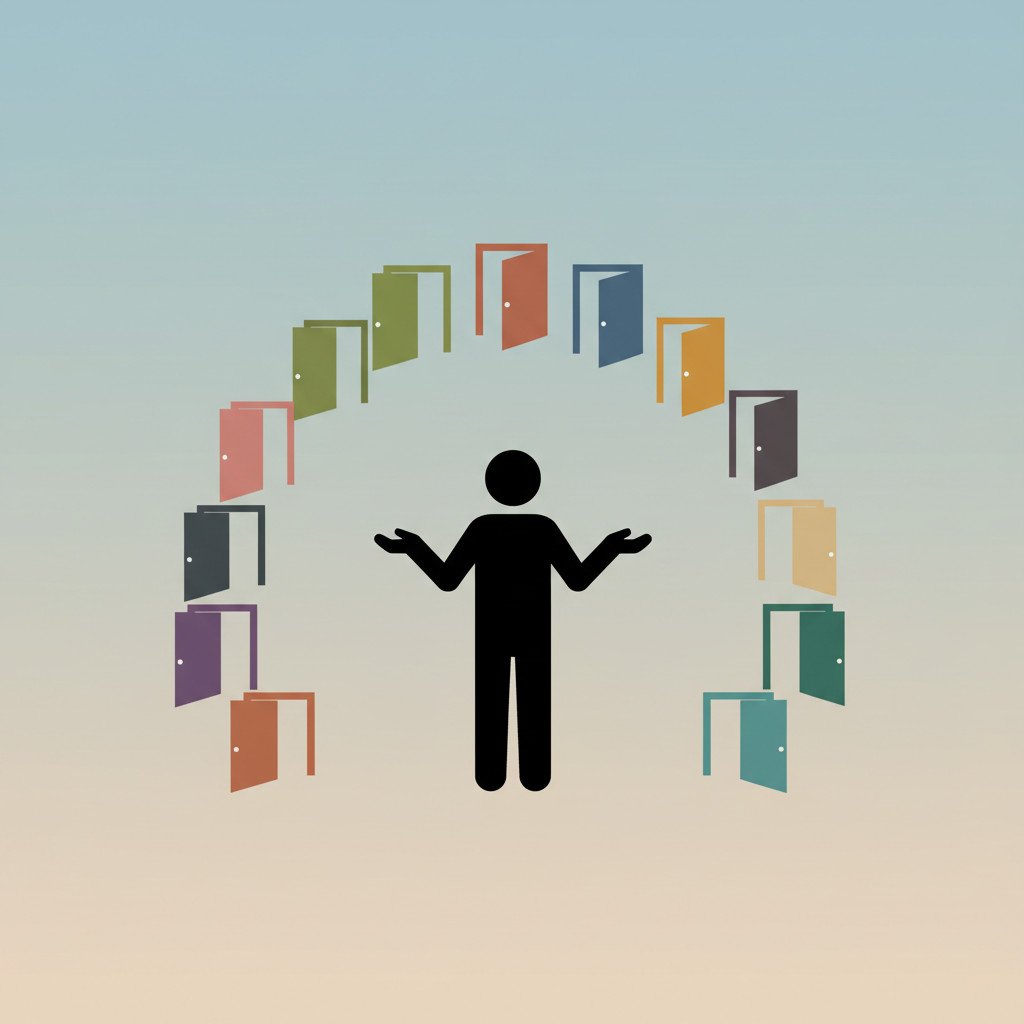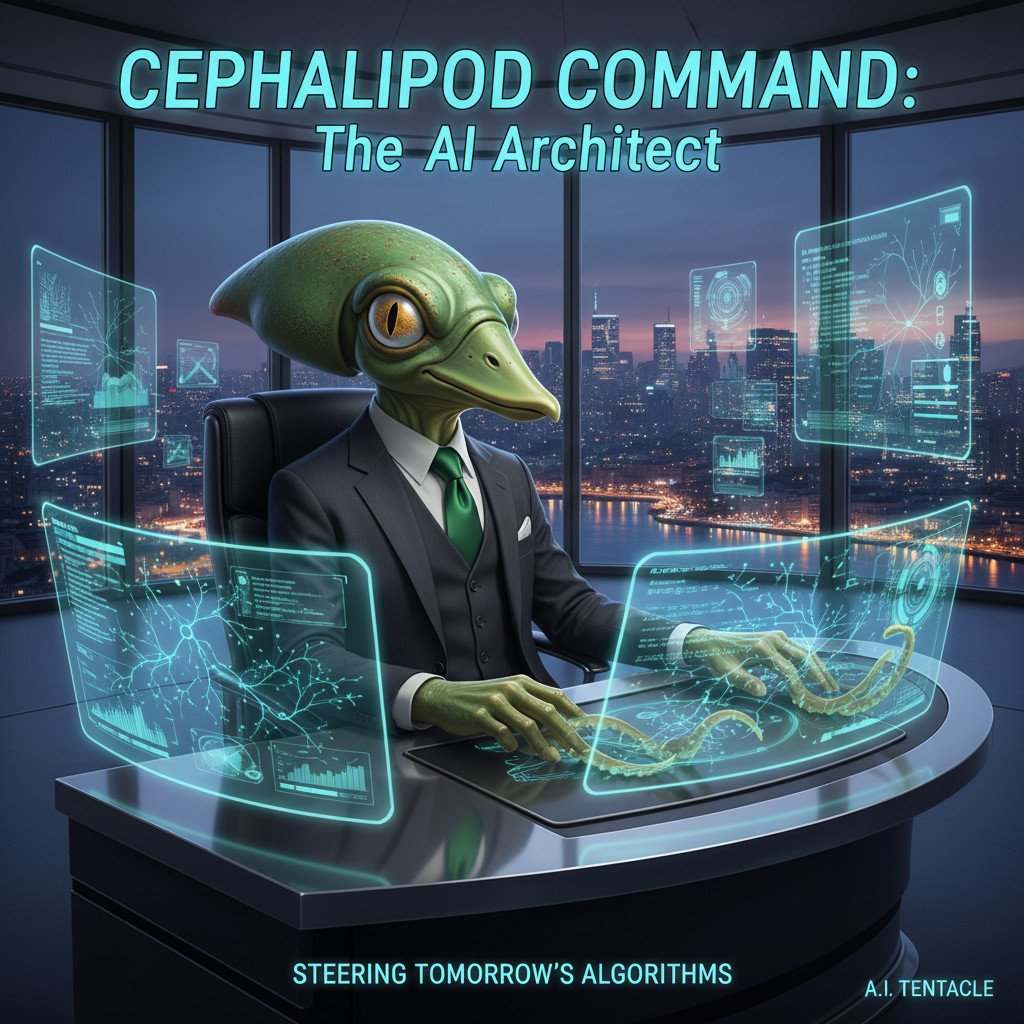Decision fatigue: why every choice costs energy
Decision fatigue creeps into your day long before lunch. When founders pick customer segments, review product features, or choose dinner, they use mental energy. Because this energy is finite, repeated small choices add up quickly. As a result, makers become sluggish, impulsive, or they postpone important decisions.
At work decision fatigue leads to cognitive burnout, poor prioritization, and avoidable mistakes. For example a CEO who answers every email makes fewer high quality strategic choices later. However routines like wearing the same shirt or batching decisions conserve willpower. Therefore startups that standardize low impact tasks free attention for high stakes choices.
This article stays practical and accessible. First we will show simple routines and checklists that reduce noise. Then we will explain how AI powered tools and an AI assistant can accelerate market research and provide fast summaries, without replacing your judgment. Finally you will get a short playbook to stop wasting bandwidth on small choices and focus on what matters. Read on to reclaim mental energy and make better decisions every day.
Along the way we will introduce time blocking, delegation, scorecards, and no decision periods. Moreover we will show how automation and AI assistants summarize competitors so you focus on judgment.
What is decision fatigue?
Decision fatigue describes the drop in mental energy after making many choices. It happens because each choice uses limited cognitive resources. As a result, people make poorer or simpler choices later in the day. For example, a judge may grant fewer parole approvals after a long session. This pattern shows that even unrelated factors, like time of day, can change judgment (see the judicial study below).
Key symptoms and effects
- Irritability and reduced patience, which harm team communication.
- Impulsivity, leading to snap choices that ignore long term value.
- Procrastination and avoidance of complex tasks until energy returns.
- Decision shortcuts such as defaulting to the status quo or a safe option.
- Lowered self control, which affects willpower and follow through.
Why decision fatigue happens and what the research shows
Psychologists link decision fatigue to the strength or ego depletion model. This model suggests that self control draws from a finite pool. Consequently, after exerting control for some tasks, people have less left for later choices. The classic paper on ego depletion summarizes this idea (Baumeister et al., 1998). For the original study see PubMed.
A striking empirical example comes from judges. Researchers found that parole rulings varied by session time. Judges approved more early in the day and fewer before breaks. This result highlights how extraneous factors shape decisions (Danziger et al., 2011). The study is available on PubMed.
Importantly more recent work and critiques refine ego depletion ideas. Therefore use practical safeguards rather than treat the effect as absolute. For instance AI assistants and workflow memory tools can offload routine choices. See Secure Memory, Agile AI for building such workflows. Moreover be aware that automation raises governance questions, which are discussed in Is Agentic AI the Key to End-to-End Automation. Finally tools like Yext Scout show how search automation fights low value tasks.
Together these studies and practical notes explain why decision fatigue matters. Next we will cover concrete tactics to reduce it at work.

Evidence that decision fatigue affects people and teams
Researchers have tested decision fatigue and related concepts for decades. Because findings vary, we summarize the strongest evidence and real world data. Below are clear signals that decision fatigue matters for productivity, judgment, and mental health.
Key summarized findings
- Baumeister and colleagues introduced the ego depletion idea in 1998. They argued that self control is a limited resource and that it drains with use. See the original paper on PubMed for details.
- A high profile field example comes from Danziger et al. (2011). Judges granted favorable parole rulings about 65 percent early in sessions. However approvals dropped sharply later and then recovered after breaks. This pattern shows how decision timing and fatigue change outcomes. (PubMed)
- A large multilab preregistered replication in 2016 failed to reproduce a consistent ego depletion effect. Therefore scientists urge caution and emphasize robust methods. See the multilab replication (Hagger et al., 2016).
- Work fatigue links to real world productivity. For example a systematic review found that sustained fatigue increases the risk of long term sickness absence. This finding ties cognitive exhaustion to business outcomes. (PubMed)
What this evidence means in practice
- Decision quality changes across the day. For example people rely on defaults more when tired. As a result, routine choices steal bandwidth from strategic thinking.
- Scientific opinion is mixed. Some lab effects are small or inconsistent, however field patterns remain clear. Therefore use safeguards even while research evolves.
- Employers should measure and mitigate cognitive load. For instance time blocking and breaks restore judgment and reduce costly errors.
Decision fatigue study comparison
| Study | Year | Sample or method | Key finding | Link |
|---|---|---|---|---|
| Baumeister et al. | 1998 | Lab experiments on self control | Proposed ego depletion: self control wanes with use | PubMed |
| Danziger, Levav, Avnaim-Pesso | 2011 | Judicial parole decisions (field data) | Parole approvals fell from ~65% to near 0 across a session and recovered after breaks | PubMed |
| Hagger et al. multilab replication | 2016 | Large preregistered multilab sample | Did not find a reliable ego depletion effect across labs | Hagger et al. 2016 |
| Systematic review meta-analysis | 2019 | Longitudinal workplace studies | Sustained fatigue raises long term sickness absence risk | PubMed |
Together these results show a practical truth. Even though lab debates continue, real world patterns matter. Therefore startups should design workflows to reduce decision overload. In the next section we move from evidence to tactics you can use today.
Decision fatigue across populations
Decision fatigue looks different depending on your role. Office workers juggle meetings, emails, and project tradeoffs all day. Students weigh study plans, course choices, and social life. Healthcare professionals make high stakes clinical and triage decisions under time pressure. Consumers face many small purchasing and subscription choices online. Because each group handles distinct decision types, symptoms and consequences vary. Therefore tailoring tactics matters.
| Population | Common decision types faced | Typical symptoms of decision fatigue | Consequences |
|---|---|---|---|
| Office workers | Scheduling meetings, email triage, project prioritization | Irritability, procrastination, reliance on defaults | Missed deadlines, poor strategic choices, increased errors |
| Students | Course selection, study scheduling, exam strategies | Mental fog, avoidance, impulsive study decisions | Lower grades, cramming, burnout |
| Healthcare professionals | Diagnostic choices, treatment plans, shift handovers | Reduced patience, rushed judgments, attention lapses | Medical errors, longer patient stays, clinician burnout |
| Consumers | Browsing options, subscription management, impulse buys | Choice overload, buying without research, regret | Wasted money, subscription fatigue, lower satisfaction |
Spot the common threads: repetitive low impact choices, time pressure, and context switching. As a result, startups should design role specific safeguards like batching, checklists, and delegated rules.
Common causes of decision fatigue
Decision fatigue builds when mental resources stretch thin. It usually starts with too many small choices. Over time these tiny decisions add up and sap willpower. Consequently your brain favors quick fixes over thoughtful answers.
- Multitasking and context switching because shifting focus wastes energy. For example jumping between email, meetings, and product work drains attention.
- Information overload when options and data grow. As a result you pause, research more, and delay decisions.
- Poor or insufficient sleep which reduces self control and clarity the next day. Therefore even simple choices feel harder.
- Repeated low impact choices such as selecting snacks, tools, or meeting times. These trivial choices steal bandwidth for strategic work.
- High decision density under time pressure when many choices cluster together. For instance founders during fundraising face dozens of calls and pitches in a week.
Everyday triggers and relatable examples
Imagine a morning of five meetings, twenty emails, and a hiring interview. By noon you feel foggy and impatient. Because your brain has cycled through many micro decisions, you accept defaults and avoid nuance. Similarly a student choosing study topics after a long night of work will likely pick easier tasks. However the worst time for big choices often comes late in the day.
Recognize the pattern: repeated small choices, tight deadlines, and fatigue combine to make poor decisions. Therefore use routines, batching, and simple rules to cut triggers. For example predecide lunches, delegate small approvals, and block deep work to protect your judgment.

Practical strategies to beat decision fatigue
Start with small wins to protect mental energy. First, separate big choices from small ones. Then reduce friction around routine tasks. As a result you free cognitive bandwidth for high stakes work.
Prioritize and simplify choices
- Identify high impact decisions and protect those times. For example block mornings for strategy sessions when you are fresh. Because decision quality varies across the day, schedule complex work earlier.
- Use simple decision rules and scorecards. Therefore you avoid re-evaluating the same options repeatedly.
- Reduce options. For instance limit feature choices to three clear paths.
Batch tasks and time block to reduce context switching
- Batch similar decisions like hiring or vendor reviews into single sessions. This reduces context switching and saves energy.
- Use time blocks for deep work. For example two-hour focused sessions without meetings or notifications.
- Schedule short decision sprints for routine items. Then close the loop quickly so you avoid lingering choices.
Delegate, automate, and use checklists
- Delegate low impact approvals to trusted team members with clear thresholds. For example allow customer service to resolve refunds under a set amount.
- Create checklists for recurring processes, like product launches. Checklists prevent errors and speed choices.
- Apply automation and AI for repetitive research and summaries. For instance let an AI assistant pull competitor trends and summarize insights, so you focus on judgment.
Build routines and no-decision periods
- Standardize daily decisions such as meals and outfits. Thus you reduce morning decision load.
- Insert no-decision windows and breaks. For example take a 15 minute walk after long meetings because breaks restore clarity.
- Use micro rituals to reset, such as a short breathing exercise before big calls.
Technology and AI as cognitive aids
- Use AI powered tools to summarize market research, extract themes, and draft scoring matrices. Consequently you save hours of tedium.
- Employ workflow memory tools that keep context and past choices. As a result you avoid repetitive research.
- However treat AI outputs as aids, not final answers. Always apply your judgment to final decisions.
Start small and iterate. Implement two strategies this week and measure results. Over time you will reclaim mental energy and make better, more consistent choices.
Conclusion: reclaim focus and multiply impact
Understanding decision fatigue matters for personal and professional success. When you reduce cognitive load, you make clearer, faster choices. Therefore leaders gain time for strategy and creativity. Over time these small wins compound into better products and happier teams.
EMP0 helps companies build AI-powered workflows that cut routine choices and surface high impact insights. For example, EMP0 automates market research, summarizes competitors, and frees leadership bandwidth. Explore EMP0’s solutions at EMP0 Solutions and the company blog at EMP0 Blog. For hands-on automation recipes visit Automation Recipes.
Start with one change this week. Then iterate. Ultimately you will protect your best thinking and scale decision quality across your team.

